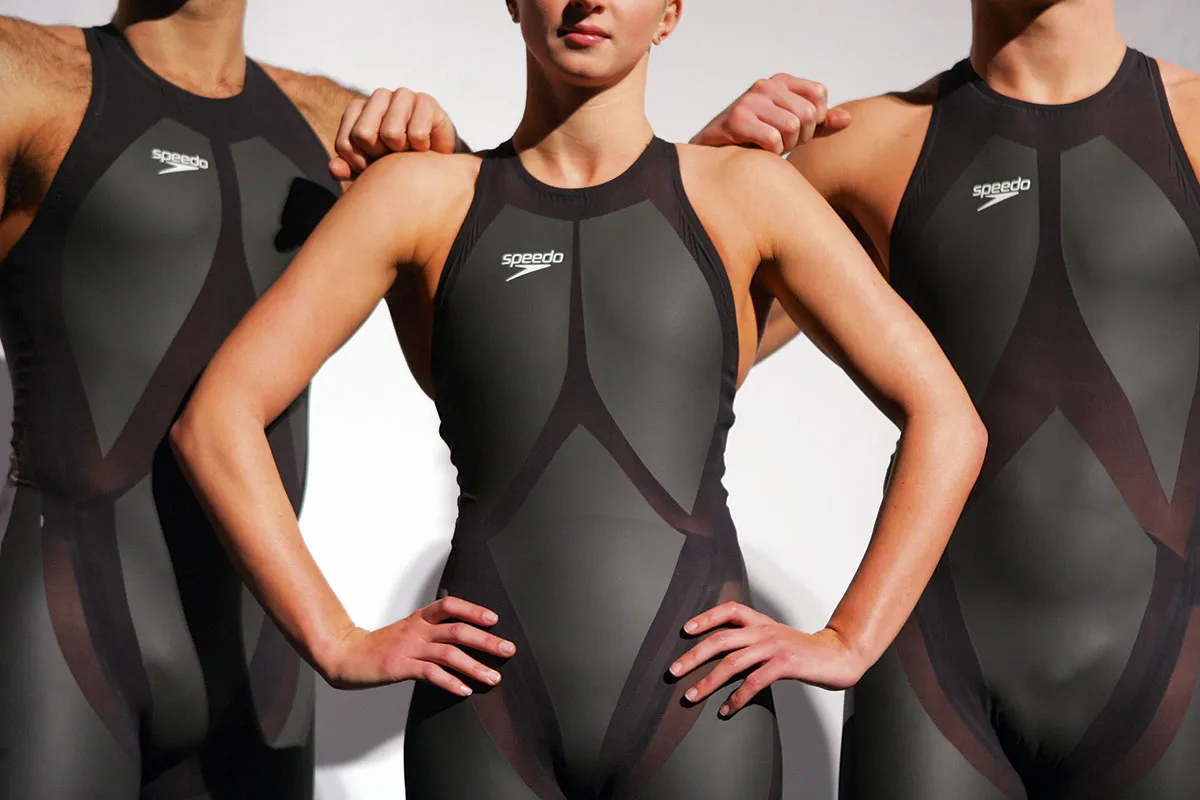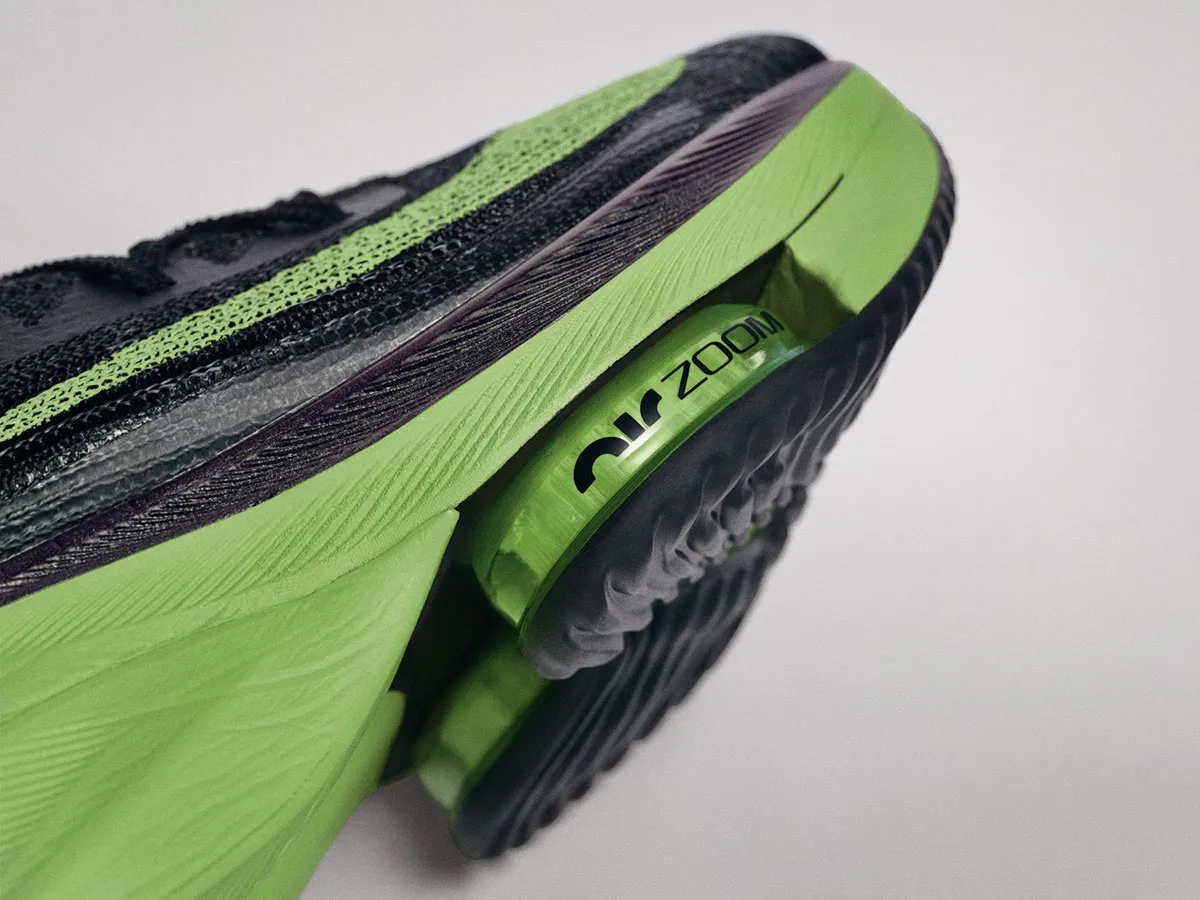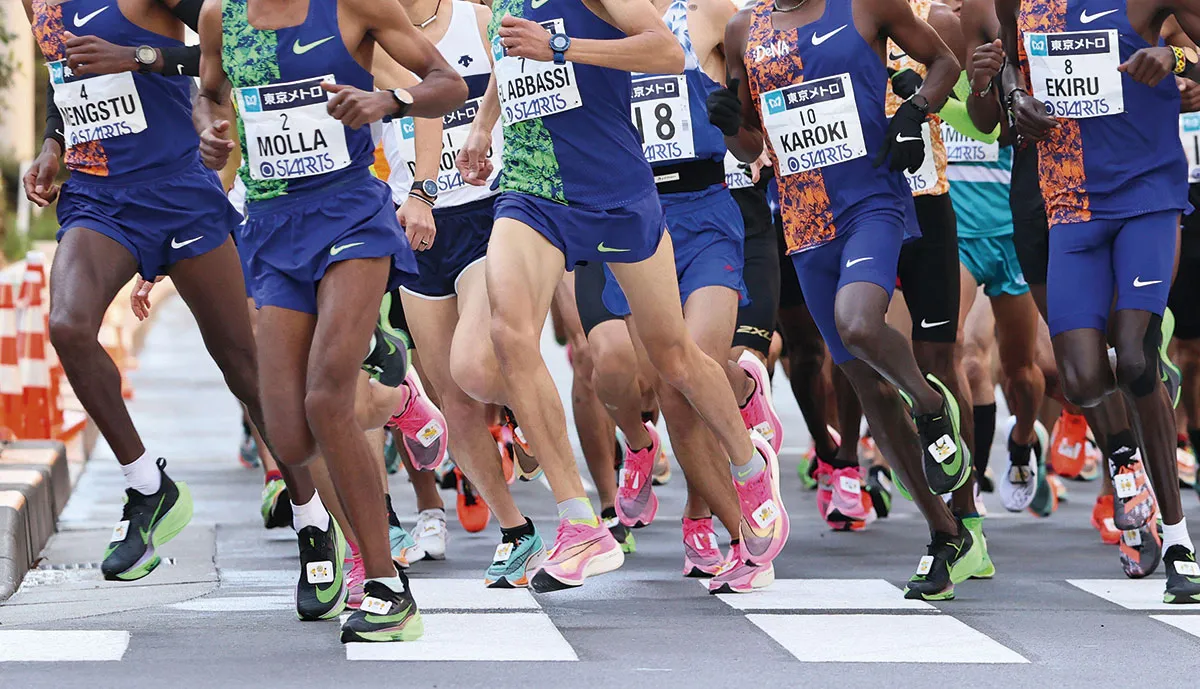What running shoes have been banned from the Tokyo Olympics?
In October 2019, Kenya’s Eliud Kipchoge did what no human had done before and ran a marathon in under two hours. His 1:59:40 time came via an average speed of 21.18km/h (just try that for 30 seconds next time you’re on a treadmill).
But some argue the unofficial record partly derived from the Nike Alphafly shoes he was wearing. The Alphaflys, or “the shoe that broke running”, as sports scientist Dr Ross Tucker called them, contain tech designed to deliver greater energy return and speed.
Thanks to a trio of carbon plates and a cutting-edge midsole (the cushioning above the tread), peer-reviewed studies – albeit funded by Nike – claimed the shoe served up a 4 per cent increase in running efficiency and an estimated 3.4 per cent in speed.
However, new guidelines unveiled by World Athletics back in January 2020 saw the Alphaflys banned from elite competition. These new rules outline a shoe must have no more than one carbon-fibre plate, with midsole height not exceeding 40mm.
But the story doesn’t end there. Nike has released an altered version, the Vaporfly, which adheres to the new regulations and the shoe took 31 of the 36 podium positions at major marathons in 2019. Proponents laud Nike’s innovation; critics say it’s technological doping.
What is technological doping anyway?

The World Anti-Doping Agency (WADA) is best known for battling drug cheats. But its remit covers sports equipment too, and WADA will suggest a sport’s governing body prohibits a particular item if it’s deemed to be “against the spirit of the sport”.
But since most kit is designed to enhance performance, many items fall into a grey area, like Speedo’s LZR Racer swimsuit, for example. The body-length suit uses textures based on shark skin to increase buoyancy.
At the 2008 Beijing Olympics, 23 out of the 25 swimming records broken came from athletes wearing the LZR Racer. The suit was banned by swimming’s governing body FINA (Fédération Internationale de Natation) in 2009.
How does the Nike Vaporfly work?

On the face of it, the legal Vaporflys resemble a traditional shoe. But subtle differences combine for a significant difference. According to the British Journal Of Sports Medicine, the carbon-fibre plate, midsole material and midsole thickness are at the heart of the Vaporfly’s efficiency.
The full-length plate increases the shoe’s stiffness and acts as a lever to cut work at the ankle. This, Nike-funded but peer-reviewed studies claim, increases running efficiency by 1.5 per cent. On its own, the carbon plate’s stiffness might deliver an uncomfortable feel, but this is offset by the thickness of midsole, which measures 31mm at the heel.
Such a thick midsole would add weight over a traditional race shoe, but doesn’t because it’s made with a polyamide block elastomer called Pebax foam. More recent models also feature air pods as an extra suspension system.
It’s difficult to pin down the collective advantage each element grants. But for some runners, the stability, energy efficiency and comfort the shoes provide is more beneficial than others – improvements in run times range from 6 per cent to absolutely nothing, according to the British Journal Of Sports Medicine.
Is ‘shoe fairness’ even possible?

With commercialism the driving force, shoe fairness simply isn’t possible. Nike’s revenue grew 9 per cent in 2020, hitting the $11.24bn-mark (£7.9bn), with online purchases of its footwear a big driver. Even the considerable £250 price tag for the Alpha/Vaporfly shoes didn’t deter performance-seeking recreational runners.
Nike’s secured a number of patents with the Vaporfly including the curvature of that full-length carbon plate. And while competitors such as Adidas and Saucony have followed suit, do their different shapes and different lengths of carbon afford the same advantage or has Nike beaten them to it?
If a marathon runner wearing Adidas’s equivalent shoes covers the 26.2-mile distance in 1:57:00, will Nike cry foul and play the technological-doping card?
It’s a competitive quagmire, though one World Athletics (track and field’s governing body) has gone some way to navigating this by limiting the midsole height to 40mm.
What other technology could boost running performance in the future?

As the disparity in performance improvements for runners wearing the Vaporfly showed, differences such as arch shape, foot width and run gait all impact the proficiency of a shoe. So bespoke footwear is the ideal.
And it’s happening with Adidas using 3D foot-scanning technology and 3D printing to produce its prototype Futurecraft run shoe. This has progressed to the Strung shoe, slated to launch in late 2022.
In future, tech could be used to help you run quicker by lowering your perceived exertion. This revolves around brain manipulation using transcranial direct current stimulation (tDCS), which is already growing in popularity.
The idea is that a low current sent through your grey matter teaches your brain to maintain stronger neural signals as you flag, resulting in faster times. tDCS products are already on the market making big claims that aren’t backed by independent evidence.
Read more about the Olympics:
- A psychologist explains why finishing second feels worse than third
- What is the deadliest Olympic sport?
- Will we reach a point where sports records can no longer be broken?
- Animal Olympics: 9 species that could smash human world records
To submit your questions email us at questions@sciencefocus.com (don't forget to include your name and location)